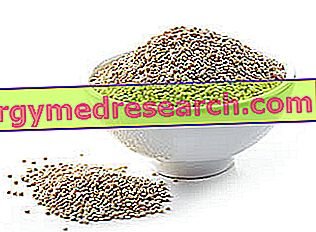Generality
Cardiomyopathy is a disease of the heart muscle, characterized by an anatomo-functional alteration that reduces the contractile capacity of the heart.
Based on the changes undergone by the myocardium, a cardiomyopathy can be classified as dilatative, hypertrophic, restrictive or arrhythmogenic of the right ventricle.
Inherited or acquired, cardiomyopathies usually cause dyspnea, syncope, edema in various parts of the body and changes in the heart rhythm.
A patient with cardiomyopathy cannot heal, but if treated appropriately, he can have a better life expectancy.
A brief reference to the anatomy of the heart
The heart is a hollow organ, composed of four contractile cavities: two are on the right and are called right atrium and right ventricle ; the other two are on the left and are called left atrium and left ventricle . Through the atrium and the right ventricle passes the non-oxygenated blood, to be pumped towards the lungs; through the atrium and the left ventricle, on the other hand, passes the oxygenated blood to be pumped to the various organs and tissues of the body.
The pumping action is guaranteed by the muscular structure that constitutes the four cardiac cavities, called as a whole myocardium .
To regulate the flow of blood between the various compartments and between the heart and blood vessels, there are four valves, also known as heart valves .

What is a cardiomyopathy?

Figure: representation of cardiac alterations in various types of cardiomyopathies. From the site: merckmanuals.com
For cardiomyopathy - the literal meaning of the term is " heart muscle disease " - means any anatomical modification of the myocardium that has a negative effect on a functional level, with sometimes very serious consequences on the functioning of the heart.
In fact, those suffering from cardiomyopathy have a weak and less effective heart in its blood pumping action.
CLASSIFICATION OF CARDIOMOPATHIES
There are several cardiomyopathies and at least two criteria for classifying them.
The first criterion is based on the place of origin of the problem and distinguishes primary cardiomyopathies, in which only the heart is affected, from secondary cardiomyopathies, in which the problem of the myocardium derives from pathologies of other organs or from particular situations.
The second criterion, instead, is based on the characteristics of the alterations that the myocardial structure undergoes and identifies four types of cardiomyopathies:
- Dilated cardiomyopathy
- Hypertrophic cardiomyopathy
- Restrictive cardiomyopathy
- Arrhythmogenic cardiomyopathy of the right ventricle
Between the two classifications, the second is the most used.
Causes
Cardiomyopathy can be:
- An inherited disease ( familial cardiomyopathy ). According to some studies, genetic defects could be located in different locations: on the sex chromosome X, on an autosomal chromosome (ie non-sexual) or at the level of the mitochondrial DNA.
- An acquired disease . Cardiomyopathies developed in the course of life are acquired due to a specific reason or for no apparent reason. A cardiomyopathy that arises without apparent reasons is called idiopathic.
CAUSES OF ORIGIN OF NON-IDIOPATHIC ACQUIRED CARDIOMYOPATHIES
The causes that can cause the appearance of non-idiopathic acquired cardiomyopathy are numerous. Here is a list of the main ones:
- Hypertension
- Heart attack, coronary heart disease, myocardial infarction and valvulopathies (ie heart valve diseases)
- Diabetes ( diabetic cardiomyopathy )
- Thyroid problems ( thyrotoxicosis )
- Complicated pregnancy ( peripartum cardiomyopathy )
- Abuse of cocaine and amphetamines
- State of alcoholism, especially when combined with malnutrition ( alcoholic cardiomyopathy )
- A chemotherapy therapy based on doxorubicin or daunorubicin
- Exposure to certain toxic substances, such as cobalt or mercury
- Obesity
- hemochromatosis; amyloidosis; sarcoidosis. They represent three different causes of infiltrative cardiomyopathy
- Acromegaly
- Myocardial infections (which then lead to myocarditis) supported by Coxsackie B virus or enterovirus
- AIDS
- A parasitic infection supported by Trypanosoma Cruzi ( Chagas disease )
- Nutritional problems due to lack of essential vitamins or minerals
- Muscular dystrophies of various types (including Duchenne muscular dystrophy )
- Persistent cardiac arrhythmias
DILATATIVE CARDIOMYOPATHY
Features. Cardiomyopathy characterized by a dilation of the left ventricle of the heart, with consequent stretching and thinning of the muscular wall. In the long run, the anatomical alteration can spread to the left atrium and then to the right ventricle.
Epidemiology. It is the most common type of cardiomyopathy. It usually affects adults between the ages of 20 and 60, but may also occur in an individual of a very young age. It is more common among men.
Main causes. It may be due to: genetic factors, diabetes, hypertension, complicated pregnancy, viral and parasitic infections, alcoholism, contact with toxic substances or use of cocaine and amphetamines. There is also an idiopathic form.
HYPERTROPHIC CARDIOMYOPATHY
Features. Cardiomyopathy characterized by an enlargement of myocardial cells (muscle fibers) and the consequent thickening of the ventricular walls. As a result of this thickening, the cavities of the left ventricle and right ventricle shrink, making the proportion of blood leaving the heart lower.
Epidemiology. In the United Kingdom, it affects one person every 500; may affect young people and adults.
Main causes. It is mainly due to genetic factors, but it can also arise due to thyroid problems or diabetes. There is also an idiopathic form.
RESTRICTIVE CARDIOMYOPATHY
Features. Cardiomyopathy characterized by a stiffening of myocardial tissue and the latter's inability to relax after each contraction. This prevents the heart from filling with blood properly, before each contractile event. The stiffening of the myocardium is the presence of scar and fibrous tissue in both ventricles.
Epidemiology. It is very rare and affects mainly the elderly.
Main causes. It may be due to: genetic factors, amyloidosis, hemochromatosis, sarcoidosis or chemotherapy drugs. There is also an idiopathic form.
ARTIMOGENE CARDIOMYOPATHY OF THE RIGHT VENTRICLE
Features. Cardiomyopathy characterized by death and replacement with scar tissue of the myocardium which constitutes the right ventricle. Since the electrical system that governs the heart rhythm also resides in the right side of the heart, the lack of myocardium in this area leads to the appearance of arrhythmias.
Epidemiology. It is typical of adolescents and adults. It is one of the causes of sudden cardiac death in young athletes.
Main causes. It is mainly due to genetic factors.
Symptoms
Cardiomyopathies can be asymptomatic (ie without obvious symptoms) or characterized by symptoms and signs very similar to pathological manifestations caused by heart failure or arrhythmias (or alterations in heart rhythm).
In the latter case, the person who is affected usually manifests:
- Sense of persistent fatigue
- Shortness of breath ( dyspnea ), both under stress ( dyspnea on exertion ) and at rest ( dyspnea at rest )
- Syncope
- Edema (or swelling) in the legs, hips, feet, neck veins and abdomen ( ascites )
- Chest pain that often tends to get worse after a meal
- Special heart murmurs
- Irregular beat (usually tachycardia )
asymptomatic
Asymptomaticity (ie the lack of symptoms) can be a prerogative of dilated cardiomyopathies and hypertrophic cardiomyopathies.
At the moment, it is unclear why some patients who are affected by these cardiomyopathies do not experience any problems. For some patients, the lack of symptoms is a characteristic of the disease at the beginning; for some others, it is a problem that also marks the most advanced stages of the pathology.
Complications
Any type of cardiomyopathy can lead to specific complications. However, here, we will limit ourselves to reporting only the general complications, common to all cardiomyopathies.
- Heart failure . It consists of reduced ventricular function, which leads to insufficient blood supply to organs and tissues.
- Valve regurgitation . It occurs when the heart valves, altered in the structure, no longer work as they should, allowing the blood to turn back where it started.
- Cardiac arrest .
- Pulmonary embolism, due to an aggravation of the edema.
- Worsening of the arrhythmias present.
Diagnosis
To diagnose cardiomyopathy, the doctor (usually a cardiologist ) uses various non-invasive tests, such as:
- Blood analysis
- RX-thorax, nuclear magnetic resonance and / or CT scan
- Electrocardiogram
- Echocardiogram
- Stress test
and, if they are not enough, also to different invasive procedures of cardiac catheterization (including coronarography and myocardial biopsy ).
First, however, they are generally expected: a thorough physical examination and a thorough analysis of the patient's clinical and family history .
Treatment
A heart with cardiomyopathy cannot heal (think, for example, of the definitive replacement of myocardial tissue with scar tissue). However, thanks to a combination of drugs and the implantation of some cardiac devices, such as the pacemaker, the cardioverter defibrillator and the left ventricular assist device, it is possible to improve patients' symptoms and quality of life.
If, due to the extreme gravity of the situation, the drugs and cardiac devices should not give the desired results, the treatments that remain available, at present, are:
- Septal myectomy or alcohol ablation of the septum (NB: they are indicated only in the case of hypertrophic cardiomyopathy)
is
- Heart transplantation . This is a delicate surgery and easily subject to complications
Some drugs used in case of cardiomyopathy:
- Hypotensive (ACE inhibitors, angiotensin II receptor antagonists, calcium channel blockers and beta blockers)
- Bradycardia (beta-blockers, calcium channel blockers and dioxin)
- antiarrhythmics
- Diuretics
- anticoagulants
- Steroidal anti-inflammatories (corticosteroids)
- Aldosterone antagonists
Prevention
Certain cardiomyopathies, such as idiopathic forms and hereditary forms, cannot be prevented (NB: in the first case they also arise in an individual who leads a healthy lifestyle; while in the second case they are the result of genetic defects present from birth) .
On the contrary, cardiomyopathies due to an incorrect lifestyle are at least partly preventable.
Here's how:
- Not smoking
- Do not take drugs
- Don't drink alcohol or at least take it in the right amounts
- Eat healthy
- Maintain a normal body weight
- Practice physical activity constantly
- Sleep and rest according to the needs of the body
Prognosis
In recent years, treatments for heart disease have been extensively refined. Therefore, even for patients with cardiomyopathy both quality and life expectancy have increased.



